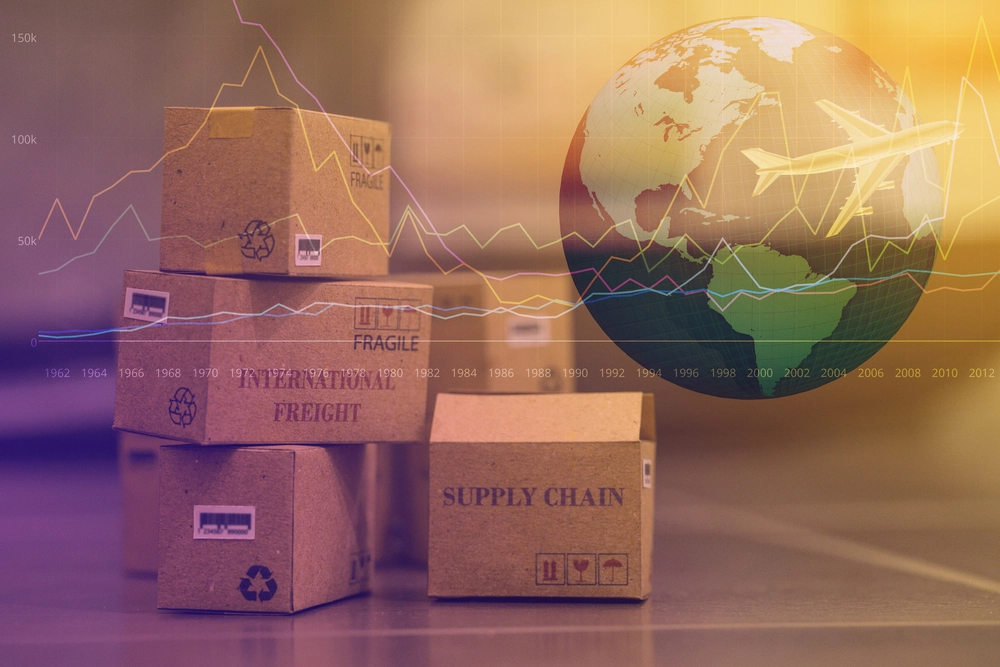The Effects of Inflation on the Packaging and Print Industry
Following recent vaccination rollouts, most people now have reliable protection against the COVID-19 virus. The chances of experiencing severe symptoms have reduced, while countries are gradually easing travel restrictions. These developments have led to the reopening of the economy. However, along came high inflation rates, attributed to greater consumer demand pit-up against recent supply chain constraints.
According to Bloomberg, U.S. consumer price index (CPI) reached a 40-year high of 7.9% in February 2022. Core prices increased to 0.5% from the previous month and 6.4% from the previous year. Meanwhile, prices for merchandise and annual growth in services costs continue to accelerate. The Federal Reserve states that the high-interest rates pose a significant threat to the labor market and the economy.
Consequently, numerous industries have felt this inflation, including the packaging and print industry. Soaring freight rates, material and transportation costs, and other price increases are some of the effects of inflation on the industry.
There are other effects that the packaging and printing industry has encountered. Here are the ways high inflation rates have affected these industries.
5 Ways Inflation Has Affected the Packaging and Print Industry
1. Increased prices for key materials
Behind the increase of costs in finished printing and product packaging goods is the rise in their raw material prices. In 2020 alone, the PPI (pages per inch) has increased by 50%, significantly driving up the price for paper. The rise in prices for pulp has also contributed to the increase in paper price.
2. Higher packaging costs
As prices of packaging materials increase, so do overall packaging costs. They are estimated to increase by 30% or more this year. Food packaging costs, such as clamshells, may experience a rise of 6% to 10%. This percentage increase also appears in other product packaging costs, including corrugated cartons and labels.
As the world continues its fight against the pandemic and towards its recovery, demand for most commodities increases exponentially. This increase in demand stems from businesses worldwide catering to their customers in both physical stores and online shops. With that, demand for packaging also increases, overwhelming the supply chain.
The continuing global demand for plastic packaging and the rising costs in the resin markets have pushed manufacturers to increase their prices. Price hikes will be the norm until the market regulates itself by narrowing the gap between global demand and the corresponding supply.
3. Inefficiencies with manufacturers and packaging suppliers
With most people shopping online, the demand for goods has accelerated due to the quick cycle of looking at the products and checking out from online stores. Because of this, manufacturers and packaging suppliers may not be able to keep up with this erratic market behavior.
The high cost of raw material supplies and the fast-paced demand for goods can pose a problem for packaging and printing manufacturers in their supply chain management. Pressure from meeting customer requirements can make manufacturers and suppliers focus more on prioritizing specific jobs than running their production as efficiently as possible.
4. Increased cost for transportation
The inflation also drove an increase in transportation costs. More demand for shipping companies to transport packaging and printing materials has led to oil price hikes, making shipping more expensive.
Global supply chain disruptions, such as accidents or extreme weather conditions, have also been a significant factor in the shortage of raw materials and finished packaging goods. The current supply chain crisis can slow down transportation as countries have closed borders. This forces shipping and transport companies to take longer delivery times, causing a shortage in supply.
5. Price increase from subcontractors
Like other packaging businesses, inflation has also made subcontractors or packaging merchants vulnerable to the same kind of price hikes and operational cost increases. These packaging merchants are known for reselling packaging products that a third-party manufacturer produces.
Thus, the end-users often bear the brunt of the effects of inflation since selling the products at a higher price helps merchants cope with the price increase. This shouldering of costs may further drive market prices up, especially with the high demand and low supply situation.
Packed with Inflation
Global demand for goods has increased exponentially, overwhelming the global supply chain. This shortage has paved the way for rising interest rates, affecting several industries.
Since most goods require the products of the packaging and print industries, they have been brimming with demands but low on key material supplies. With this, brand owners need to know and understand how these economic trends affect other industries as well to create a plan to cushion any adverse effects.
If you’re looking for quality packaging, Meyers Printing provides professional printing solutions for all your packaging needs. Contact our experts today and learn more about how we can bring your brand’s vision to life.

